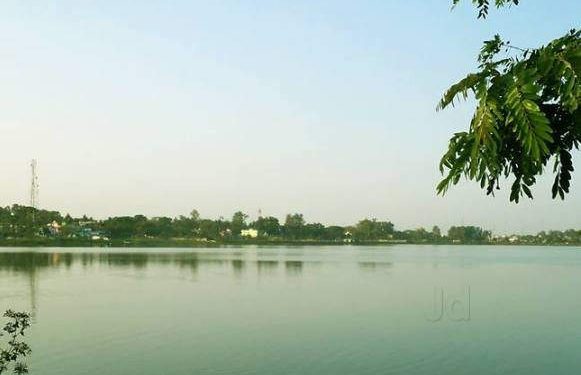Jeypore: Of late, the Koraput district administration has come forward to develop the historical Jagannath Sagar of Jeypore town; touted to be the oldest and largest manmade pond of Odisha.
According to sources, a meeting of the district level officials will be conducted July 30 to discuss on the present status as well as a future action plan for Jagannath Sagar will be envisaged. The meeting will be presided by sub-Collector Lokanath Dalabehera.
The district fisheries officer, district tourism officer, executive engineer (minor irrigation), municipality executive officer and local tehsildar will also participate in this discussion.
Earlier, the team had a meeting with Secretary of Urban Development department during which he advised them to carry out the restoration work of Jagannath Sagar as per provisions of National River Conservation Plan of the central government.
It may be mentioned here that the state government sanctioned Rs 30 crores to develop the historical pond last August. October 14 last year, cleaning work in the pond began however to everyone’s dismay it was an utter failure, sources said.
The budgetary provision was meant for— cleaning the surface water, purifying the polluted water, conservation of soil in park area, massive plantations, laying pavements around the water body, making necessary arrangements for housing avian guests and cleaning the surrounding areas as well.
Notably, the historic Jagannath Sagar is gradually losing its sheen day by day, by getting filled with mud and other sediments.
Moreover, polluted drain water of Jeypore town is being fed into this water body.
Lakhs of fishermen are depended on Jagannath Sagar for their livelihood. Wide varieties of migrating birds come to this water body during winter, as it is a preferred breeding ground.
Few years ago, the vast Jagannath Sagar was squeezed and Odisha’s first ever ‘Cactus Park’ was constructed on its northern part, which eventually closed down. A boating club was also constructed spending crores of rupees and later the space was used for parking buses, which subsequently became a vending zone.
A park named ‘Netaji Park’ was also inaugurated on the southern side which still lies unused and deserted. It is learnt, some unscrupulous people also have plans to construct a Kalyan Mandap to the south-eastern side of the pond.
About half of the area is known to have been given on lease by the fisheries department. Squeezing the area further, the state tourism department had opened a restaurant near Jayanagar.
Worthy to note—the then king Ramachandra Dev-II excavated this pond on a large patch of 300 acres of land by hiring 10,000 labourers in 1716 and the East India Company accorded tourist destination tag to the pond three years later.
The pond has now shrunk to just 180 acres, due to unauthorised encroachments. The pond was created with an aim to maintain ecological balance and meet water requirements of people of both Koraput and Nabarangpur districts.
PNN






































